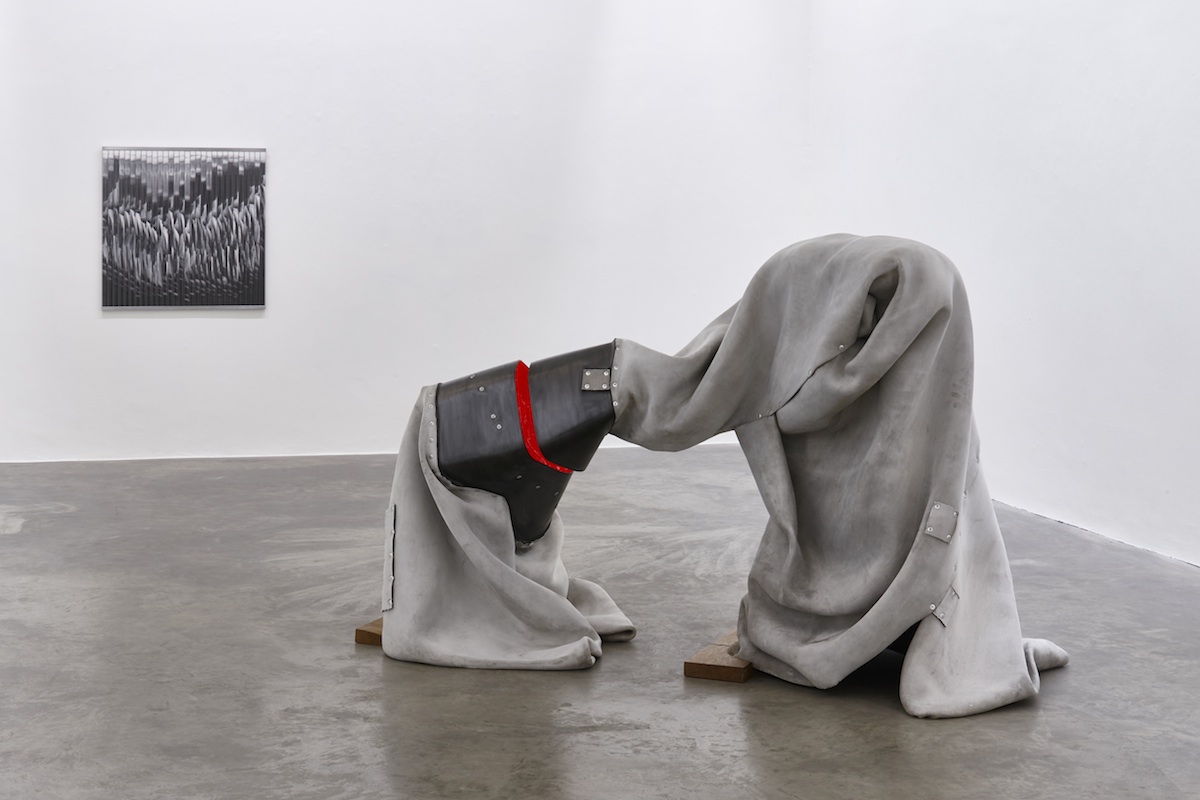Siobhán Hapaska at the Kerlin Gallery
Hapaska’s arresting new sculptures are remarkable in how they demonstrate, all at once, a virtuosic handling of materials, a self-aware engagement in the process of emulation, and an underlying implication of horror incarnate. Eight of the works are mounted on the walls, each of them a square, or near-square, of double-glazed plastic sheeting partitioned into several transparent channels. These channels are filled with an amalgam of ground marble and carbonised oak, poured in grain by grain, like sand in an egg timer. Crushed burnt wood and white stone accumulate in piles of ash and tiny crystals, creating rippling piebald images against the front surface. Four of the wall pieces bear a likeness to charcoal fishing holes in fields of icy marble dust, all sinking lopsided into powdery ridges and still settling, as though gravity is not finished with them yet. The other four are staccato compositions in which the vertical segments echo each other’s patterns in slices of abrupt variation or feathery soft gradient. These fractured monochromatic works suggest motion in the manner of chiaroscuro strokes in a charcoal life-drawing, evoking x-ray images of splintered ribs, the crisscrossed keys of a smashed piano or the sound waves of a sustained scream. They surge in effervescent motion, two with wispy swirling wafts of orange pigment, magma hot, swimming ominously in the black dust. Their vulnerability to the very turbulence to which they allude inspires both wonder and foreboding. These images, which appear to shake with such intensity, themselves made from the pulverised materials of art and architecture, could, like an etch-a-sketch, have their disturbing beauty wiped away with the slightest tremor.
The four floor-sculptures seem to exist in the aftermath of the earthquake scenes that their wall companions forecast. Each is made from an incongruous mixture of fiberglass, oak and concrete canvas – a material invented for building emergency shelters. The materials are attached to each other with rows of steel rivets and rendered into improvised sculptural forms. The grey, hunkered Bird (2016) holds two large stainless steel ball bearings in its concrete suit, its anvil head peering skyward. Us (2016) fuses an anachronistic oak board with a white fiberglass dome that recalls the pearlescent sculptures of Hapaska’s 1990s work. The pair are held in a clutching embrace with an arm of concrete canvas that is double-enforced with patches: signs of a previous breach. What results is the impression of badly mended aerospace equipment with no implied function other than to stand and hold each other up. The points of contact between forms are marked by lacquered neon orange paint, as if warmed or lit up by proximity to one another. In Touch (2016), the side of a tall oak plank burns as it leans diagonally against its counterpart of folded, faux-fur-lined concrete canvas. Similarly the sculpture duo Love (2016) kneel on chiseled steps of wood, twisted and inclined together, their patched cloaks sutured onto burnished cones which gape in a passionate blood orange interface.
The sculptures in this exhibition imply crisis in their material and subjugation in their form. They invoke the pain of displaced people; predict fresh ruination, imminent catastrophe. Their prophecy effects a sense of disquiet which not even their sci-fi aesthetic renders hypothetical.
